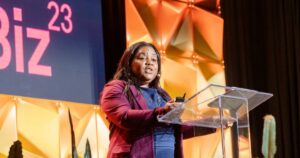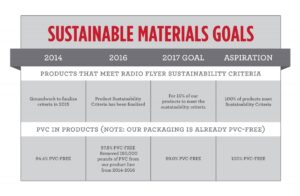
Five-ish score and 100 parts per million of atmospheric CO2 ago, the U.S. financial system collapsed.
Due largely to the "truth in securities" law — a major piece of legislation created to protect investors after the stock market crash of 1929 — and the subsequent establishment of the U.S. Securities and Exchange Commission (SEC), a century has passed without seeing a Great Depression II.
A CO2 level of 430 ppm would push our world beyond its target for avoiding dangerous climate change. And in today’s 419 ppm, climate-constrained world, our colossal and complex financial system faces what may be the most fundamental economic paradigm shift since humans decided to stay put, build cities, grow food and obsess over who owns what.
Thankfully, 21st century investors have made abundantly clear their conviction that climate risk is investment risk, and the SEC listened.
For corporate sustainability professionals, questions as to what to expect, when and how to prepare for the SEC’s proposed climate disclosure rule are numerous, and understandably top of mind. At GreenBiz 23 last week, we convened roughly 2,000 folks from the core of the profession — veterans and newbies alike — to help deliver some answers.
The long arc of financial history bends toward better information for investors — right?
The simmering alphabet soup
During a discussion I moderated at the conference focused on how to prepare for the shift from voluntary to mandatory climate disclosure, one theme underlying questions from the 350-plus session attendees was, in sum: What do we do with the rankers, raters and disclosure platforms from the voluntary space?
Mandatory climate disclosure via the SEC proposed rule is just one piece of the bigger ESG pie and is designed to satisfy the needs of one particular (and particularly important) stakeholder group: Investors.
But, as Kristen Sullivan, head of sustainability and ESG services at Deloitte, reminded the audience, "Remember that only around 20 percent of the S&P 500 provided ESG or sustainability disclosure in 2019, and now 96 percent provide voluntary disclosure."
In the emerging epoch of stakeholder capitalism, insofar as that is a real thing and not a nice phrase, voluntary disclosure and the varied ESG information it provides have not lost value. A response of "Kindly see our 10-K" isn’t helpful for the many stakeholder groups — current and future employees, current and future customers, civil society, etc. — who increasingly want to understand a company’s sustainability performance and progress.
It’s worth remembering that intangible assets — assets without physical form, such as brand reputation, relationships and goodwill — account for 90 percent of S&P 500 market value. As I heard one C-suite leader say over dinner at the event, in the ESG talent war, talent won.
Safe harbors, and where to start
A major concern in the marketplace, evidenced by the 14,000 or so comment letters to the SEC about the proposed disclosure rule, is around legal liability. In a country that runs on lawsuits as much as it runs on Dunkin’, it’s a very fair worry.
But, there has been a false sense of security among sustainability report issuers in the voluntary disclosure paradigm as it stands. Fraudulent claims are fraudulent claims, whether they live in glossy, narrative-driven sustainability reports packed with stock images of happy families and women in hard hats, or in more sedated and official financial filings.
As Kristina Wyatt, former SEC lawyer and current deputy general counsel at carbon accounting platform Persefoni, told that same audience last week, "If you're a public company … you have fraud liability for whatever you're saying, wherever you're saying it."
The safe harbor element of the SEC’s proposed rule on climate disclosure essentially says that, if a company acts in good faith in reporting its Scope 3 emissions, it will have protection from liability if it turns out it didn’t get things quite right. It’s a harbor that, in layperson’s terms, guards the good from its enemy, the perfect.
Sustainability professionals have long held many roles within one job title. For example, internal educator, business-case maker and concept translator, not to mention the day job of data collection, reporting and stakeholder engagement.
That said, Dave Stangis, CSO at alternative investor giant Apollo, still sees companies as basically "pretending this proposed rule doesn’t exist … utilizing a strategy that is, essentially, to hope it goes away." It’s always risky to paint things as inevitable, but not checking the mailbox doesn’t mean there is no mail.
A key takeaway from time on the ground at GreenBiz 23 regarding mandatory disclosure preparedness: Start at the beginning, wherever that is for you.
- SEO Powered Content & PR Distribution. Get Amplified Today.
- Platoblockchain. Web3 Metaverse Intelligence. Knowledge Amplified. Access Here.
- Source: https://www.greenbiz.com/article/preparing-climate-disclosure-largest-capital-market
- 000
- 100
- 2019
- 7
- a
- About
- Accounting
- acts
- After
- Alphabet
- alternative
- always
- among
- and
- answers
- apollo
- Arc
- around
- article
- Assets
- atmospheric
- attendees
- audience
- avoiding
- Basically
- Beginning
- Better
- Beyond
- bigger
- brand
- build
- C-suite
- capital
- capitalism
- carbon
- Century
- change
- checking
- Cities
- claims
- clear
- Climate
- Climate change
- co2
- collapsed
- collection
- comment
- commission
- Companies
- company
- Company’s
- complex
- concept
- Concern
- Conference
- conviction
- Core
- Corporate
- counsel
- country
- Crash
- created
- Current
- Customers
- Dangerous
- data
- Dave
- day
- decided
- deliver
- deloitte
- depression
- deputy
- designed
- Dinner
- disclosure
- Doesn’t
- Economic
- emerging
- Emissions
- employees
- engagement
- epoch
- ESG
- essentially
- establishment
- etc
- Ether (ETH)
- Event
- example
- exchange
- expect
- faces
- fair
- families
- finance
- financial
- financial history
- financial system
- focused
- food
- For Investors
- Forbes
- form
- Former
- Forrester
- fraud
- fraudulent
- Free
- from
- fundamental
- future
- General
- get
- giant
- Goes
- good
- Goodwill
- great
- Great Depression
- Green
- Green Finance
- Ground
- Group
- Group’s
- Grow
- happy
- Hard
- head
- heard
- Held
- help
- helpful
- history
- hope
- How
- How To
- HTTPS
- Humans
- images
- important
- in
- increasingly
- inevitable
- information
- internal
- investment
- investor
- Investors
- issues
- IT
- Job
- just one
- Key
- largely
- largest
- Last
- Law
- Lawsuits
- lawyer
- leader
- Legal
- Legislation
- Level
- liability
- live
- Long
- made
- major
- maker
- mandatory
- many
- Market
- market crash
- marketplace
- million
- mind
- MIT
- more
- most
- needs
- news
- Newsletter
- node
- numerous
- official
- ONE
- owns
- packed
- paint
- paradigm
- particular
- particularly
- parts
- passed
- percent
- perfect
- performance
- physical
- piece
- platform
- Platforms
- plato
- Plato Data Intelligence
- PlatoData
- Prepare
- preparing
- profession
- professionals
- Progress
- proposed
- protect
- protect investors
- protection
- provide
- provided
- provides
- public
- put
- Questions
- RE
- real
- regarding
- Relationships
- remember
- remembering
- report
- Reporting
- Reports
- reputation
- response
- Risk
- Risky
- roles
- roughly
- Rule
- S&P
- S&P 500
- safe
- Said
- same
- says
- scope
- SEC
- Securities
- Securities and Exchange Commission
- security
- seeing
- sees
- sense
- Services
- session
- shift
- since
- So
- Society
- some
- Space
- stakeholder
- stands
- start
- stay
- Still
- stock
- stock market
- Stock Market Crash
- Strategy
- subsequent
- such
- Sullivan
- Sustainability
- system
- Talent
- Target
- terms
- The
- their
- theme
- thing
- things
- time
- Title
- to
- today’s
- top
- toward
- u.s.
- U.S. Securities
- U.S. Securities and Exchange Commission
- U.S. Securities and Exchange Commission (SEC)
- underlying
- understand
- Understandably
- Utilizing
- value
- Veterans
- via
- war
- week
- weekly
- What
- whether
- WHO
- will
- within
- without
- Women
- Won
- world
- worth
- zephyrnet









